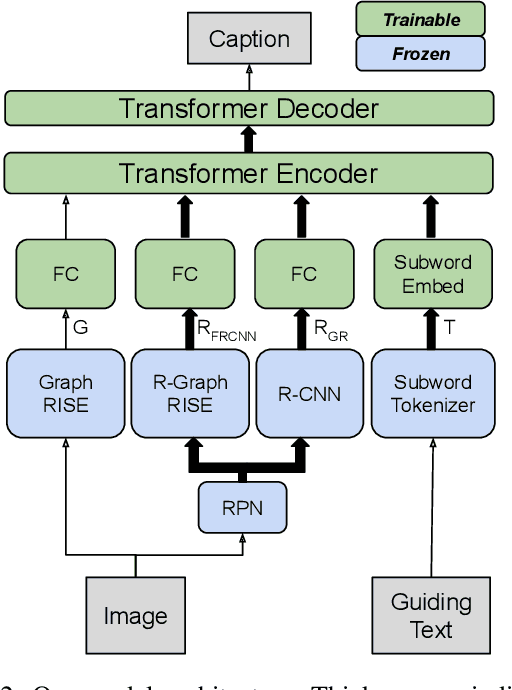Understanding Guided Image Captioning Performance across Domains
Paper and Code
Dec 04, 2020



Image captioning models generally lack the capability to take into account user interest, and usually default to global descriptions that try to balance readability, informativeness, and information overload. On the other hand, VQA models generally lack the ability to provide long descriptive answers, while expecting the textual question to be quite precise. We present a method to control the concepts that an image caption should focus on, using an additional input called the guiding text that refers to either groundable or ungroundable concepts in the image. Our model consists of a Transformer-based multimodal encoder that uses the guiding text together with global and object-level image features to derive early-fusion representations used to generate the guided caption. While models trained on Visual Genome data have an in-domain advantage of fitting well when guided with automatic object labels, we find that guided captioning models trained on Conceptual Captions generalize better on out-of-domain images and guiding texts. Our human-evaluation results indicate that attempting in-the-wild guided image captioning requires access to large, unrestricted-domain training datasets, and that increased style diversity (even without increasing vocabulary size) is a key factor for improved performance.
 Add to Chrome
Add to Chrome Add to Firefox
Add to Firefox Add to Edge
Add to Edge